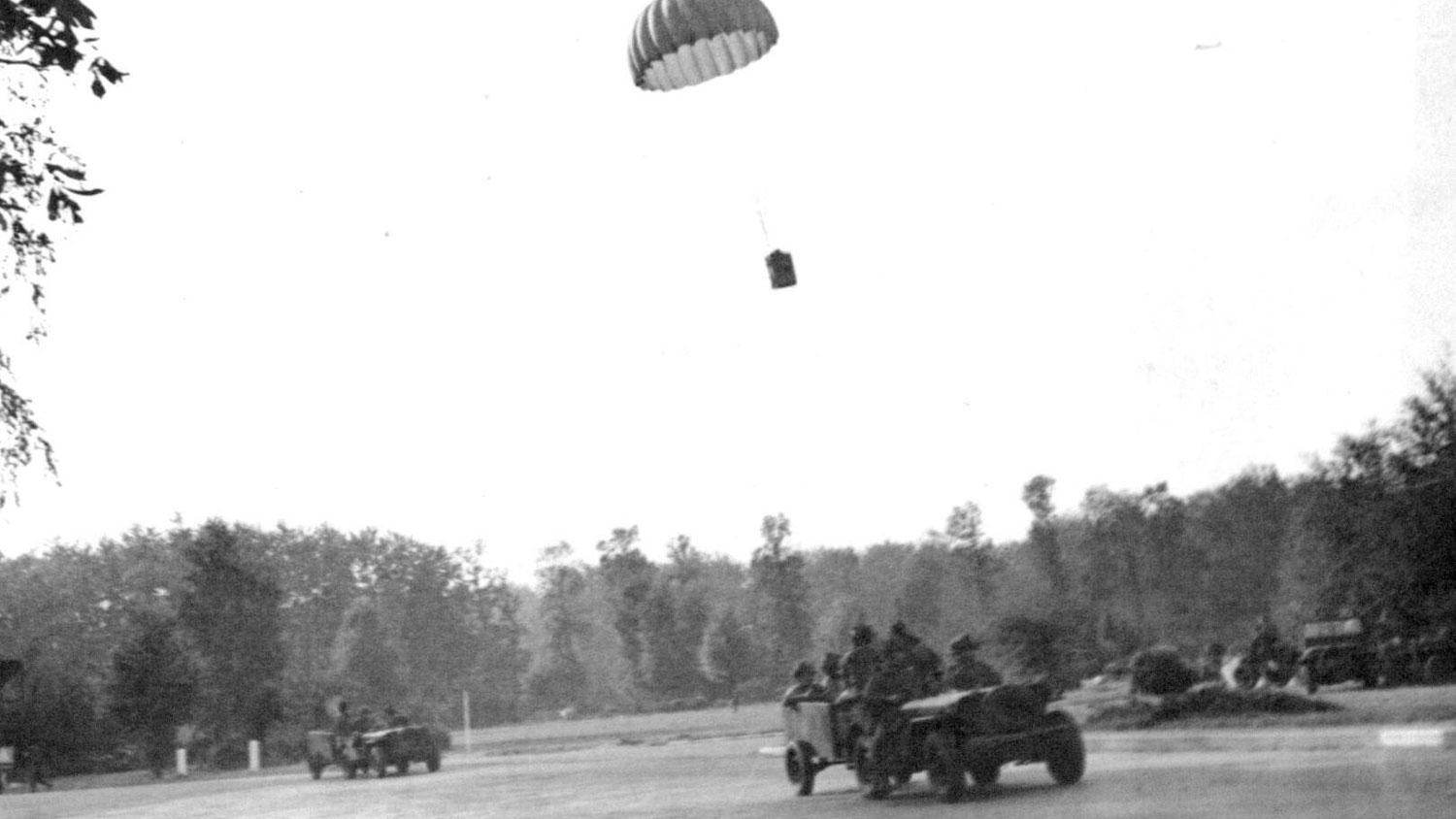A beret too far? Did famous drop zone scene in A Bridge Too Far actually happen?
An iconic scene in Richard Attenborough's 1977 epic war film A Bridge Too Far has kept fans questioning its accuracy for nearly 50 years.
Did an airborne soldier really run into a drop zone surrounded by German soldiers to retrieve a supply canister dropped by the RAF only to discover that, instead of ammunition, food or medical supplies, the container was filled with maroon berets?
Al Murray, best known for his character the Pub Landlord and his podcast We Have Ways Of Making You Talk, spoke to Forces News about his new book Arnhem: Black Tuesday, which marked a turning point for the worse during Operation Market Garden.
When asked about the authenticity of the maroon beret scene in A Bridge Too Far, Mr Murray shared how he felt watching it, saying: "I really wanted it to not be true, I wanted it to be part of the mythology.
"I was dead keen to get stuck into 'No, it's just symbolism' because people need to really underline how they think the battle was a futile thing.
"But as far as I know, there were red berets."
However, is the dramatic scene below accurate?
Did an airborne soldier, disappointed by desperately needed supplies landing in German-held territory, risk his life to take matters into his own hands?
As Mr Murray says, it's an "irresistible story".
The film's director Richard Attenborough said he included the scene to highlight the futility of war and Operation Market Garden itself.
Speaking in 1977, he explained why he decided to direct the film, saying: "The obscenity of violence, that's what the film is about and the obscenity of man's inhumanity to man and the waste of human beings."
Through research for his latest book, Mr Murray did come across several accounts of maroon berets being dropped along with other supplies.
One of these even happened on Black Tuesday, the focus of Mr Murray's book.
He said: "On the Tuesday in the afternoon, that's the supply run that comes in. That's a complete disaster.
"I mean no two ways about it. Total disaster. And it's in the movie.
"The red berets are real, but what isn't real is the sort of dramatic scene of the bloke running to get them and everyone cheering him on and he comes back and they flutter in the wind sort of, symbolically.
"That didn't happen."

As far as Mr Murray can tell, maroon berets and 90 sets of pyjamas for the wounded to wear were dropped on 1st Airborne Division during the supply drop that went disastrously wrong that day.
But despite the baffled response by those who opened containers full of maroon berets expecting to see ammunition or medical supplies, there was method behind the madness – and some people valued their arrival.
Major Geoffrey Powell, the commander of C Company, 156 Parachute Battalion, saw maroon berets being dropped on the evening of Black Tuesday.
Mr Murray said: "They get away from where they're under attack and... he hears the men laughing and they found two containers, one of which has six-pounder anti-tank rounds in it and he's an infantryman, so they are no use to him whatsoever.
"But the other container has in it maroon berets and the men are like 'Why have they given this?'.
"But he's interesting because he rationalises it [and] says these berets are... a symbol of who we are fighting-wise.
"And certainly the British airborne people are convinced that the Germans don't like... fighting people in maroon berets.
"Obviously it doesn't help because what he needs is .303 rounds."
As Mr Murray explained, dropping maroon berets when the men on the ground were desperately in need of other, more pressing supplies highlights the "inflexibility" of Operation Market Garden.
The RAF had a manifest of supplies to drop over several day and were not deterred away from the original plan.
Instead of wondering what the men might need, such as ammunition, the RAF rigidly went ahead with the plan and sent things such as clothing that had no practical use during the battle.
Or did it?
Along with the maroon berets, the RAF also dropped supplies of officers' rank pips, plus NCO crowns and stripes.
As Mr Murray discovered, Maj Powell told his NCOs and officers to remove their pips, stripes and crowns because they were being damaged during the brutal fighting.
Today's service personnel wear subdued rank slides on the front of their uniform, but Second World War NCO stripes were very large.
According to Mr Murray they were the "size of your hand on your arm" and "really visible".
So to protect the command structure of his men, Maj Powell demanded they take off their identifying pips and stripes so they were less of a target.
Mr Murray said: "No wonder they're dropping in fresh stripes and pips because people are doing what they need to do on the battlefield and then maybe later on need to stitch new ones back on."
In addition, boosted by the success of D-Day, the planners of Market Garden were convinced that operation would also be a success and so wanted the airborne soldiers looking their best during victory parades.
But instead, the men who were desperately in need of ammunition, food and medical supplies thought the arrival of maroon berets was, as Mr Murray said, "hilarious and pointless".
Unlike the scene in A Bridge Too Far, which many of the film's fans say is one of the most emotive and poignant moments of the film – highlighting the futility of war.
Arnhem: Black Tuesday by Al Murray is available to buy here.









